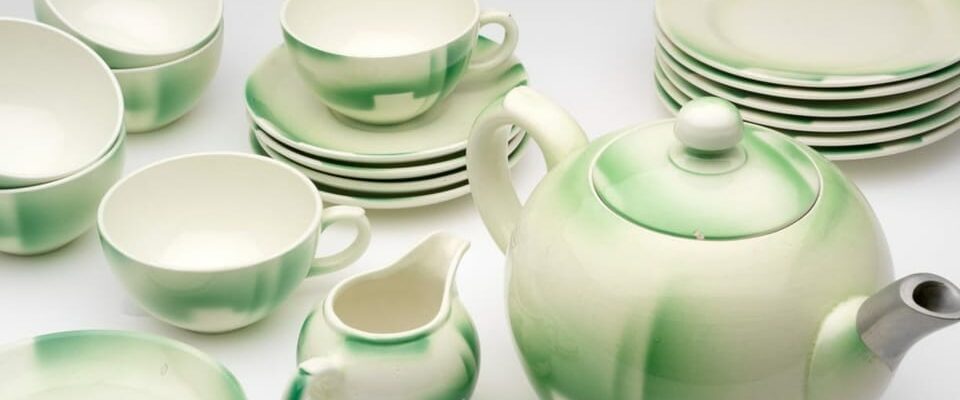Contents
Ziegler Ceramics produced household ceramics for almost 150 years. An exhibition traces the rise and fall of the company, whose artistic designs are still coveted today.
Ironically, Ziegler was the name of the new tenant of the somewhat dilapidated urban brickworks in Schaffhausen. Nomen est omen: the industrial pioneer from Winterthur had a good nose for business.
“Jakob Ziegler-Pellis has obviously recognized the potential of this branch of industry,” says Daniel Grütter, curator of cultural history at the Museum zu Allerheiligen in Schaffhausen. That was in 1828.
On both sides of the Rhine
The new tenant continued to produce bricks and industrial ceramics for the city, but also opened a crockery department. With success: soon the factory was too small.
Legend:
An everyday object from the Ziegler company with cult potential: a tea set with a green pointed decor from the 1930s.
Juerg Fausch
“So he jumped over to the other side of the Rhine, to the canton of Zurich,” says Grütter. “He built a large plant on a green meadow in the municipality of Flurlingen.”
The result: a factory at two locations. He made the water of the Rhine usable for energy and connected the two areas with a bridge.
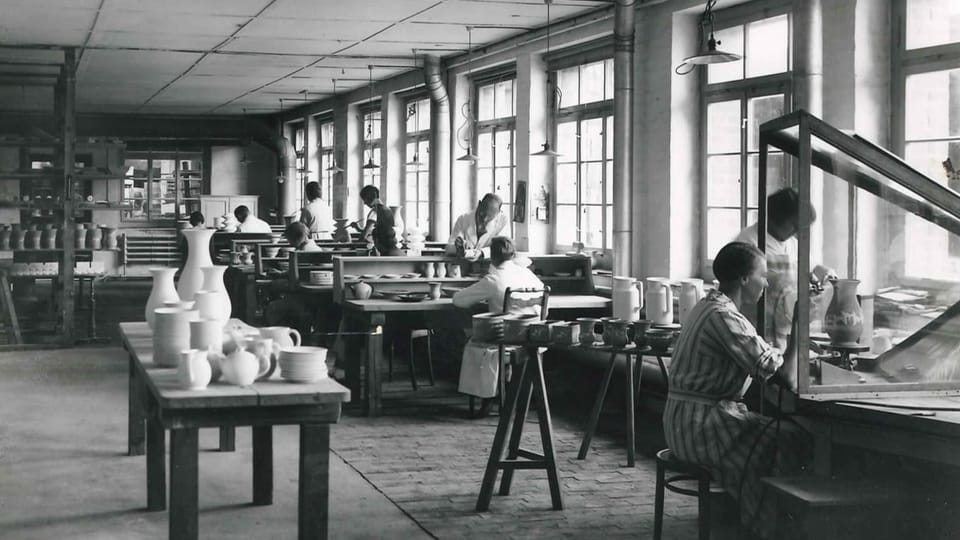
Legend:
From the workbench to Swiss households: a look into the painting studio of the Ziegler pottery factory, which has shaped our everyday culture for 150 years. Photo taken around 1928.
Stadtarchiv Schaffhausen / Museum zu Allerheiligen Schaffhausen
Jakob Ziegler-Pellis (1775-1863) manufactured platters, soup bowls, plates and jugs. The factory experimented with colors, taking inspiration from the blue and white Delft motifs or the black Wedgwood ceramics of England.
What is striking about Ziegler ceramics are the artistic designs. These are due to a deep black chapter of history.
Rising from the Ruins
“When the Americans inadvertently bombed Schaffhausen on April 1, 1944, the factory area was almost completely destroyed,” says curator Daniel Grütter.
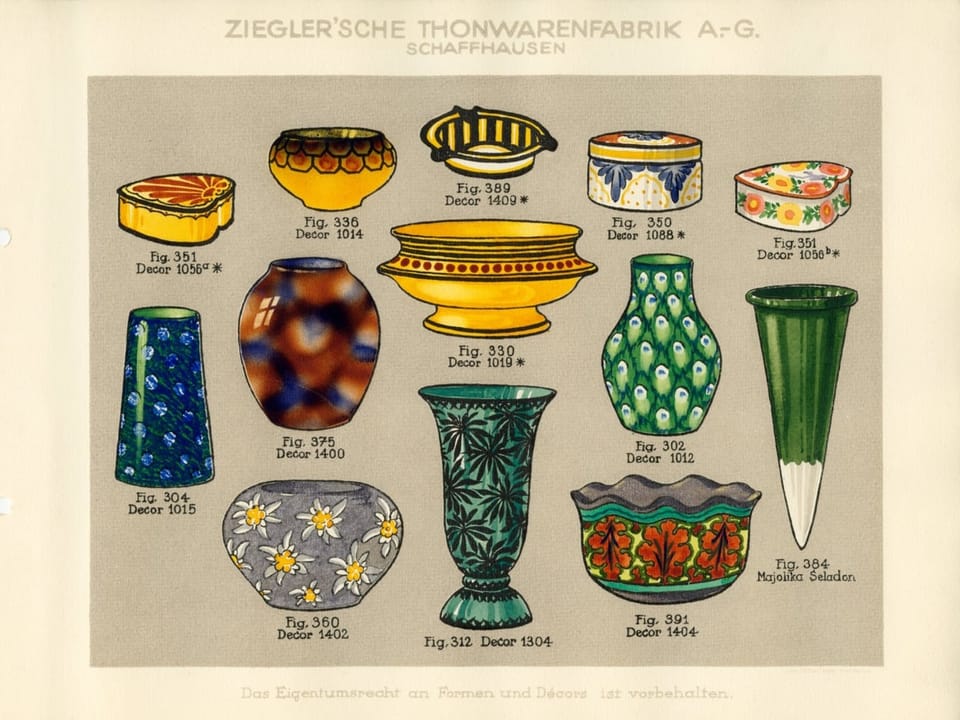
Legend:
In a product catalog with watercolors (dated between 1915 and 1926), Zielger’sche Thonwarenfabrik AG Schaffhausen demonstrates the variety of shapes and colors of its products.
Juerg Fausch
The archive was lost along with the production machines. “But with the reparation payments, the family business decided to try a new start.”
Even before the First World War, profits had plummeted. Now the latest technologies were brought to Schaffhausen and the decision was made to create an art department. Gustav Spörri was the leader.
Spörri was a Swiss ceramic artist who had risen under the Nazis to become the artistic director of the Villeroy and Boch ceramics factory in Dresden. In 1946 he escaped from being a prisoner of war in the Red Army to Switzerland.
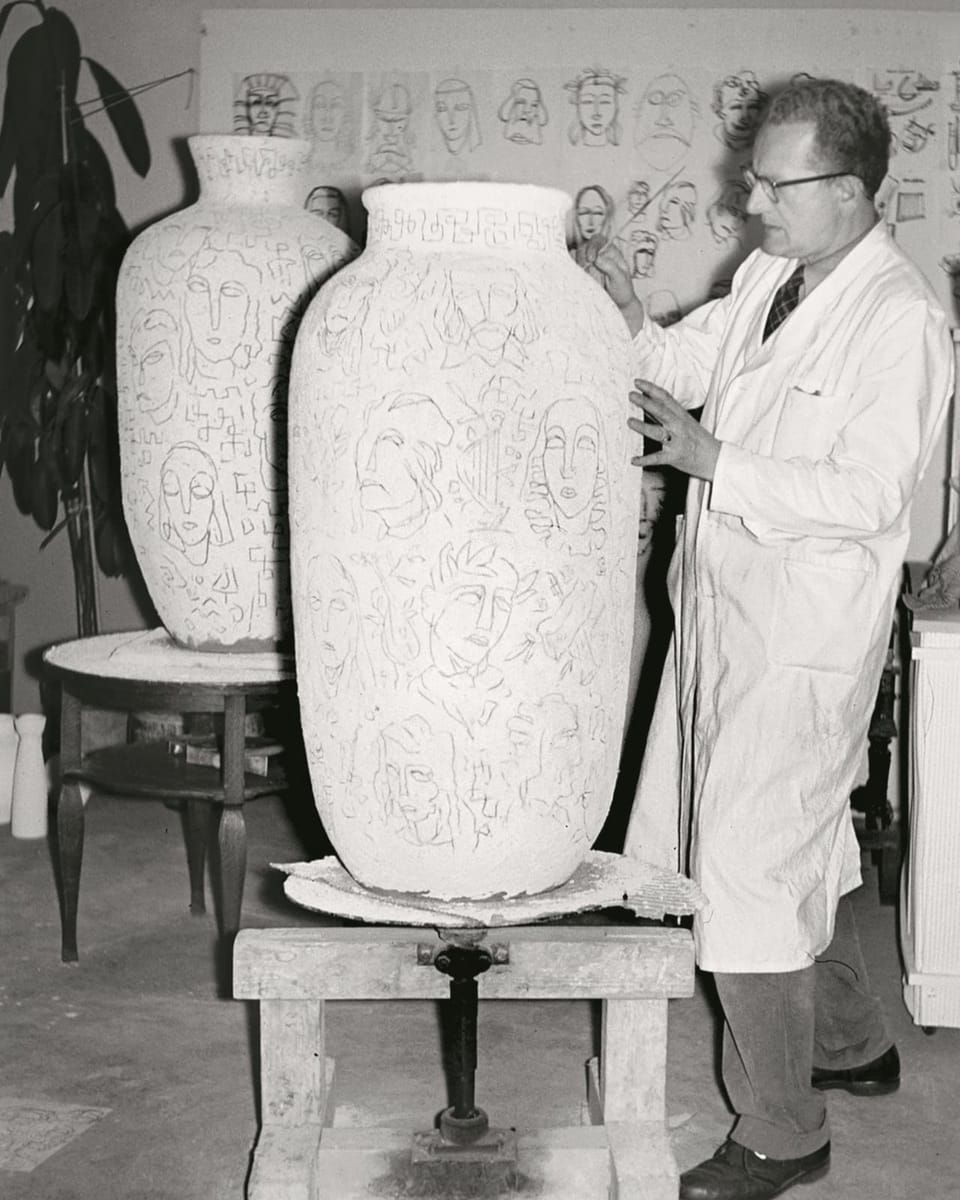
Legend:
With a keen eye for detail: the Swiss ceramic artist Gustav Spörri (1902-1976) was artistic director of the pottery factory and shaped an entire era in the traditional Schaffhausen company.
Stadtarchiv Schaffhausen / Museum zu Allerheiligen Schaffhausen
The most colorful pieces of Ziegler ceramics come from Gustav Spörri. The many depictions of animals are particularly striking. This also applies to a triangular plate on which the giraffe bends its neck so that it can even find space on it.
Mirror and victim of the zeitgeist
However, this art ceramics did not save the Ziegler pottery factory: “In the consumer frenzy of the 1950s, people began to spend the money on other things,” says Daniel Grütter. Plastic as a new material and the revival of glass did their part. In addition, products from abroad were cheaper.
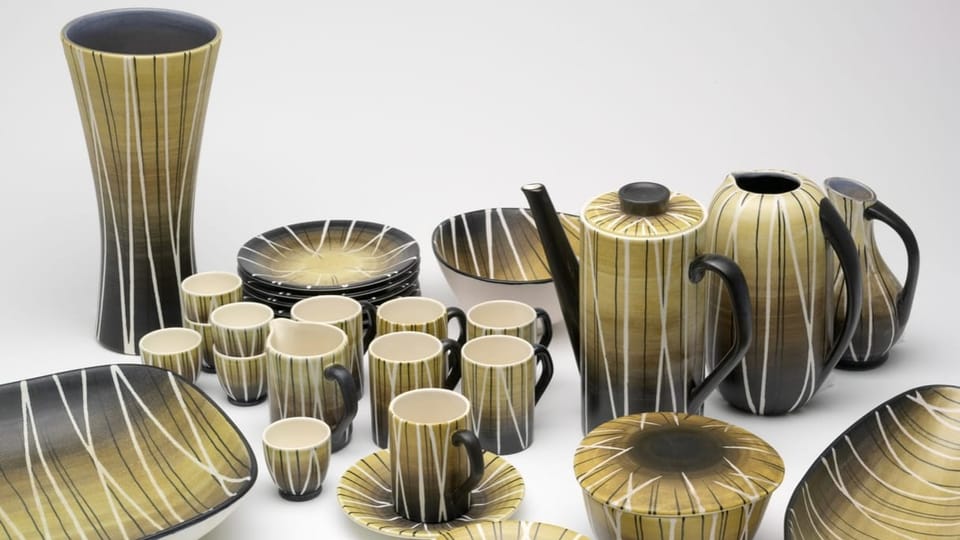
Legend:
To table! Mocha service with wool thread decoration from Ziegler. The ceramics bear witness to artistic changes and reflect the spirit of the times.
Juerg Fausch
In 1973, the fifth generation of the Ziegler family closed the factory gates forever. Ziegler ceramics are popular collector’s items. And a number of pieces still delight their owners as everyday crockery.
“Sometimes I look for Ziegler ceramics in thrift stores,” says a man at an audio station in the exhibition. “To this day I still drink my coffee from a Ziegler cup.”
A coffee treat with the aroma of almost forgotten Swiss table culture.
